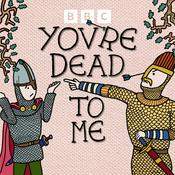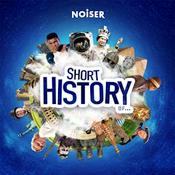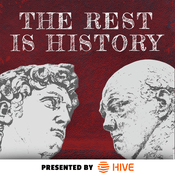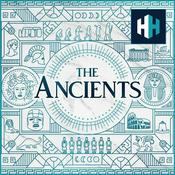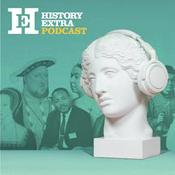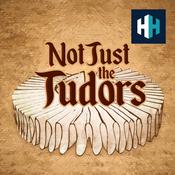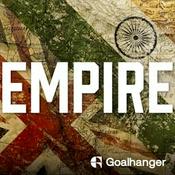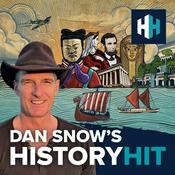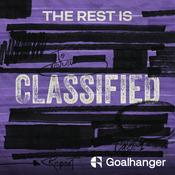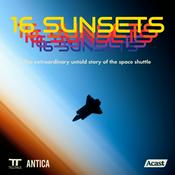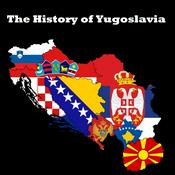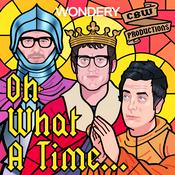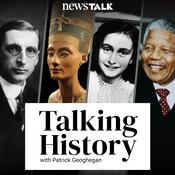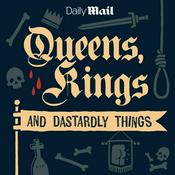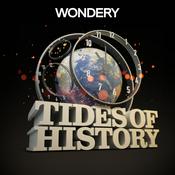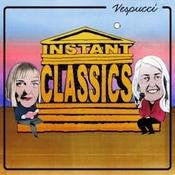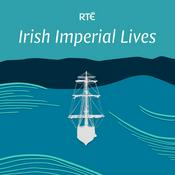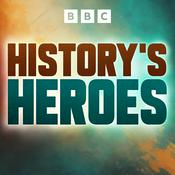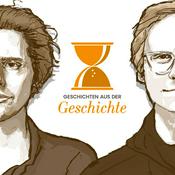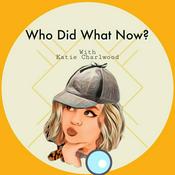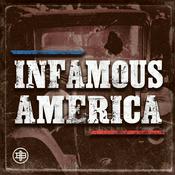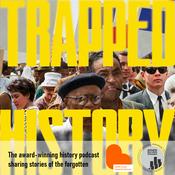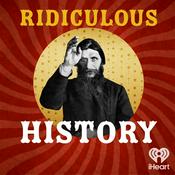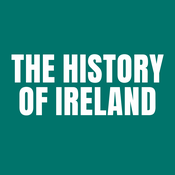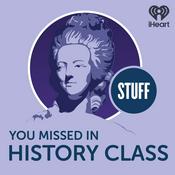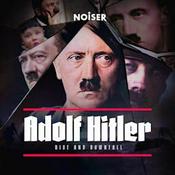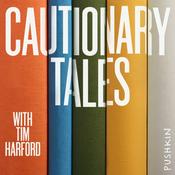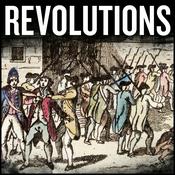12 episodes

Traditional Farming, Nature & Environment – National Biodiversity Week 2025
14/5/2025 | 44 mins.
For National Biodiversity Week we bring you stories of traditional farming and rural life and how they relate to biodiversity. There are very few direct references to biodiversity in the Cuimhneamh an Chláir archive since that concept has only become part of common language in more recent times. However there are stories of plant life and nature, cures, dyes, farming practices etc that tell us in subtle ways about biodiversity and environmental sustainability.Featured are Brendan Dunford from Tubber (Burren Beo Trust), John Vaughan from Kilfenora, Pat & Oliver Nagle from Corofin, Sean O’ Halloran from Kilfenora, Paddy Joe McMahon from Cappabane, Scariff, Teresa Flynn from Mountshannon, Thomas Barry from Inagh, Michael McGrath from Lisdoonvarna / Scariff, Bridie Mahony from Moughna, Catherine Talty from Coore. The collectors / cuairteóirí are Paula Carroll, Tomás MacConmara, Frances Madigan.For more of Catherine Talty’s self-recordings check the Cuimhneamh an Chláir collections at Digital Repository of Ireland, supported by The Heritage Council. GLOSSARY OF TERMSSwallow hole: Many rivers in the Burren area of Co. Clare flow underground as well as overground, due to the many fissures in the limestone pavement. Swallow holes are the point at which the surface water disappears underground.In Seán O’ Halloran’s account:Scailp (Irish): The cleft between rocks, very common in the Burren in Co. ClareRúitín (Irish): AnkleFáisceán (Irish): – a home-made tourniquet used to keep an animal’s broken leg bound and immobilised Series 2 of The Clare Oral History Podcast is supported by The Ireland Funds Follow Cuimhneamh an Chláir on Instagram, Facebook, X or LinkedIn

Biddy Early
10/12/2024 | 49 mins.
Biddy Early (1798-1874) was born in Killanena and lived most of her life in Feakle in Co. Clare. She was a ‘bean feasa’ or wise woman (literally a ‘woman of knowledge’). She was famous as a woman of otherworldly knowledge and the power to cure people’s ills, whether physical, psychic, spiritual, or even economic. In more recent times she has been casually called a witch, but that word and concept belong to other cultures. This notion did not really exist in the Gaelic culture of 19th century West of Ireland and it is inaccurate to apply it to Biddy Early.These stories are told mostly by local people Paddy O’ Malley, Peggy Hogan, Mary O’ Connor, May Tuohy, Rita Flaherty, Kevin Dunleavy and Joe Tuohy, with two from West Clare (Francie Kenneally, Catherine Talty). The interviewers are Tomás McConmara, Paula Carroll and Tara Sparling.Find transcript of the story told by Francie Kenneally hereMany Cuimhneamh an Chláir oral history collections are available in the Digital Repository of Ireland. Contributors above that you can explore in more detail in the DRI are Peggy Hogan, Mai Tuohy and Catherine Talty.BOOKS REFERRED TO:Biddy Early, The Wise Woman of Clare by Meda Ryan GLOSSARY OF TERMS‘Sí Gaoithe’ (fairy wind): A mysterious strong gust of wind that seems to whip up from nowhere on an otherwise fine day. Said to be caused by the fairies.Baker’s Bread: Bread bought in a shop (yeasted), rather than made at home (unleavened).‘Terrible Make Way’: A big fuss. Piseogs: A form of folk magic, always malevolent. Performed to cause misfortune to someone, such as burying an animal carcass on someone's land. Series 2 of The Clare Oral History Podcast is supported by The Ireland Funds Follow Cuimhneamh an Chláir on Instagram, Facebook, X or LinkedIn

Supernatural
31/10/2024 | 35 mins.
Supernatural experiences abound in Irish Folklore. The veil is thin between the concrete world and the other dimensions especially in the dark part of the year. The stories are told by Teresa Flynn from Mountshannon, Paddy Murphy, Joe Jack Sexton and Martin Walsh from Mullagh, John Hastings from Quin, Bridie Mahony from Moughna, Peggy Hogan from Feakle, and Sean Crowe from Broadford.GLOSSARY OF TERMSBanshee or 'Bean sí' a female spirit in Irish and other folklores whose appearance or wailing warns of impending death'Cóiste bodhar' or Death Coach: a harbinger of death.'Habit': Attire for dead person, similar to monk's habit. Sold in local shops. A plenary indulgence (Catholic faith) was gained if the hand of the dying person was put through the sleeve of the habit before they died.'Ragairne' / 'going on ragairne': night visiting to neighbours' houses'Piseogs': A form of folk magic, always malevolent. Performed to cause misfortune to someone, such as burying eggs or an animal carcass on someone's land. 'Making a churn': making butter'Scillanes': seed potatoes'Sock of the plough': metal part of a plough'Bittling': a way of washing clothes in the river by slapping them on a wooden block (a bittle). This sound was offered as an explanation for the handclap sometimes heard when the Banshee appeared.Series 2 of The Clare Oral History Podcast is supported by The Ireland FundsFollow Cuimhneamh an Chláir on Instagram, Facebook, X or LinkedIn

The Kitty Leyden Tapes Part 2
18/10/2024 | 37 mins.
In Part 2 of a public interview with 88 year old Kitty Leyden, she talks of being an emigrant in New York, returning home, emigrating to England, meeting her husband, her work in Bunratty Folk Park, making bread, family memories of eviction, her love of music and dance, traditional beliefs and 'piseogs'. Below are explanations of terms you might need help with:County Home: Institutions that replaced Workhouses in Ireland after 1922. Many subsequently became publicly funded nursing homes for the elderly. For much of the twentieth century, however, they remained associated in public memory with poverty, destitution and shame.Dr (Patrick) Hillery: President of Ireland 1976-1990, he was a GP in Miltown Malbay in the 1950s.Bunratty Folk Park: Visitor attraction featuring a collection of traditional Irish farmhouses, as well as a village street, built to represent 19th century Irish rural life. Kitty worked as an animator in the houses.Cow byre house: An ancient style of dwelling occupied by both humans and cattle. Kitty acts in a film shot in the Bunratty byre house about an eviction. It sparks memories of her grandmother who was evicted and jailed in the 19th century.'They put a layer of straw and hay all the way to her house' The equivalent of a red carpet to welcome the woman home from jail.'The Loop Head': A Bunratty Folk Park house in the style of the Loop Head region of South West ClarePiseogs: A form of folk magic, always malevolent. Performed to cause misfortune to someone, such as burying eggs or an animal carcass on someone's land.'Coming from his cuaird': Coming home having been night-visiting with neighbours.'Cóiste bodhar' or Death Coach: a harbinger of death.Series 2 of The Clare Oral History Podcast is supported by The Ireland FundsFollow Cuimhneamh an Chláir on Instagram, Facebook, X or LinkedIn

The Kitty Leyden Tapes Part 1
03/10/2024 | 35 mins.
88 year old Kitty Leyden was the youngest of 11, born on a small farm in Clonina, Cree, West Clare. She spent her young adulthood in New York. She then settled in Tulla, and raised 8 children. Hers is the story of the ordinary joys and hardships of women’s lives in mid-20th century rural Ireland. But her natural storytelling ability and her powerful memory enable her turn the ordinary into the extraordinary. Below are explanations of terms you might need help with:Press bed: a bed that folds back against the wall, usually in a kitchen.Dowry: Money the woman’s family gave to the man’s family when a marriage match was made. This money often subsequently formed the dowry of the man's sisters, and thus kept circulating in the economy.Plucking of the gander: The celebration once the match is made between the young man and woman, hosted by the young woman’s family. Haws: fruit of the hawthorn treePúca: a mythological creature in Irish folklore. Capable of shape shifting. Often appears as horse, dog or human with animal featuresCrabs: crab applesLeaguers: “Land-Leaguers" once the most popular potato grown in Co. ClareSpuds: potatoesLay nuns: Lay sisters are members of a community of religious sisters who tended to do the household duties and manual labour.Peelers: Derogatory name given to the police, after English Prime Minister Robert Peel, who created the first police force.“They carry Our Lady:” Refers to carrying a statue of the Blessed Virgin Mary in Catholic religion. May is the month of celebrating the Blessed Virgin.“A ghrá, a ghrá” Kitty’s father addressed her thus. Irish for “My love, my love” meaning ‘sweetheart’ a term of endearment.Series 2 of The Clare Oral History Podcast is supported by The Ireland FundsFollow Cuimhneamh an Chláir on Instagram, Facebook, X or LinkedIn
More History podcasts
Trending History podcasts
About The Clare Oral History Podcast
Listen to The Clare Oral History Podcast, You're Dead to Me and many other podcasts from around the world with the radio.net app

Get the free radio.net app
- Stations and podcasts to bookmark
- Stream via Wi-Fi or Bluetooth
- Supports Carplay & Android Auto
- Many other app features
Get the free radio.net app
- Stations and podcasts to bookmark
- Stream via Wi-Fi or Bluetooth
- Supports Carplay & Android Auto
- Many other app features


The Clare Oral History Podcast
download the app,
start listening.
